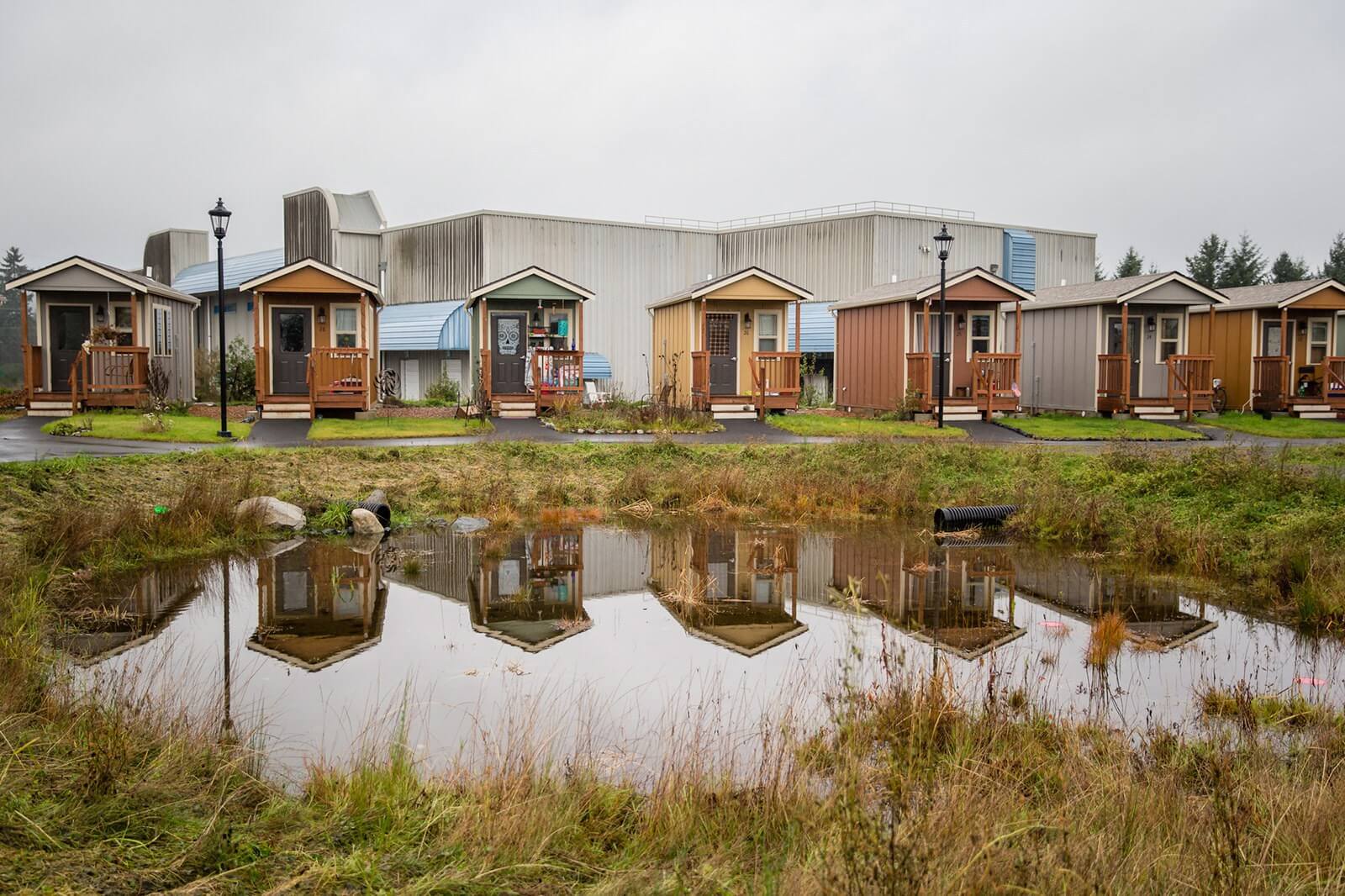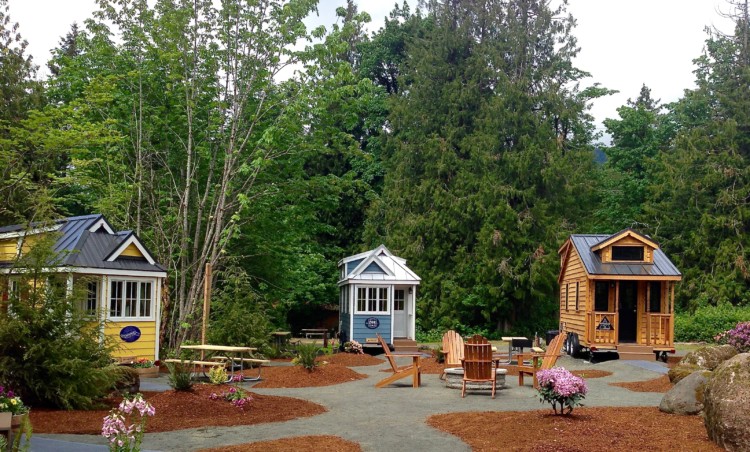Tiny House Villages – The Next Big Housing Trend

Photograph by Leah Nash
Tiny house villages could be the next big trend in housing, that’s according to a recent study by researchers at Kansas State University.
Surveys conducted in 2015 by the National Association of Realtors showed that only one percent of home buyers wanted to live in a tiny home, however the Kansas State researchers believe that this is about to change.
“We think [living in a tiny village] does a few things for one’s health, including creating a better sense of community, satisfying peoples basic needs for relationships, offering affordable housing options, and encouraging physical activity through community gardens and walking to urban establishments.” – Brandon Irwin, Kansas State Researcher.
Tiny homes are traditionally constructed on trailers, making them mobile structures. For this reason, they also create a new paradigm of home ownership whereby people are able to own their house, without needing to own the land that it’s on. Many tiny house owners struggle to find spaces to park however which has lead to an increase of tiny house owners looking to purchase land together and enter community.
Clearly there are many benefits to downsizing and living in a tiny house, however zoning laws (which vary from country to country) and issues regarding regulations have often hindered the growth of tiny house communities as well as the tiny house movement in general. The guidelines set in many areas discourage and keep out small houses – such as mobile homes – as some fear that they could be viewed by neighbours as lower-class and bring down property values.
Recently though, the explosion of interest and publicity surrounding the tiny house movement is resulting in a shift of public opinion and researchers believe that tiny houses will soon be viewed, not only as normal, but in fact desired.
“Tiny houses have a different connotation to them; they are typically seen as a middle or upper-middle-class housing structure,” said Irwin.

Mt Hood Tiny House Village
In the future, researchers plan to focus their studies on specific tiny villages to learn more about how they function and to see how the trend can be focused and possibly provide affordable housing to those in need. They also intend to learn more about the design elements of the tiny homes themselves.
“Design elements and strategies such as solar panels or low-water-use fixtures are part of the bigger sustainability and environmental health picture, but when designing and building a tiny house — or any house — it is beneficial to thoughtfully select building materials without harmful chemicals to increase indoor air quality and health. In addition, there are many known health benefits for natural lighting and fresh air in living spaces, a common theme in many tiny house designs.” – Julia Day , Kansas State Researcher.
Tiny Houses are environmentally friendly, have a much lower impact on the surrounding environment, promote community and encourage healthy lifestyles and habits. For these reasons and more experts are hoping that tiny house villages will become much more commonplace.
Perhaps the next big development in your area, could just be a picturesque parking area for these homes on wheels.
You can read more about this story here.
